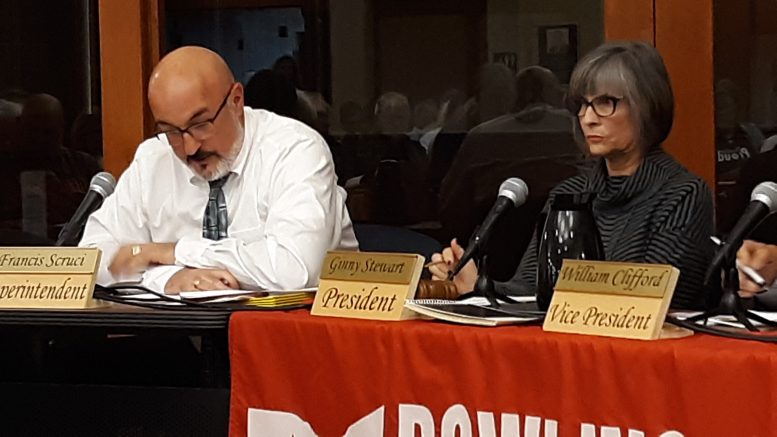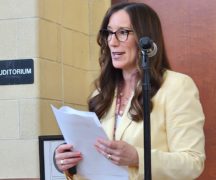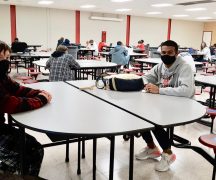By JAN LARSON McLAUGHLIN
BG Independent News
The campaign against the Bowling Green City Schools building issue has sunk to new lows, according to Superintendent Francis Scruci and others who spoke at Tuesday’s board of education meeting.
All tax issues bring about disagreements. “That is the democratic process at work,” he said.
But Scruci called out those who are engaging in name calling, personal attacks, anonymous letters and calls, egging of homes, and harassment of school board members, administration and campaign committee members.
“This board didn’t divide the community,” Scruci said in response to accusations at a recent candidates’ forum that the bond issue was tearing apart the district. “The board is doing their job.”
“Own your own efforts, and take credit for dividing the community,” Scruci said to those engaging in the negative behavior.
Scruci called out one school board candidate for writing an inappropriate sexual post on social media about a levy campaign member. A screen shot of the since removed message showed it was posted by candidate Brian Smith.
He also denounced the “bullying tactics” of anti-levy candidates for posting several of their campaign signs positioned not at passing traffic, but directed at his home.
“I can’t help but think it was placed so we know that they know where we live,” Scruci said.
One school board member has spoken with police and legal counsel about threatening behavior toward her. And one citizen read portions from a police report, in which a school board candidate, Grant Chamberlain, admitted threatening another member of the task force.
As usual, for recent school board meetings, two Bowling Green police officers were stationed in the meeting room.
Fifteen citizens spoke at the meeting – with all but two supporting the building issue, and with many criticizing nasty campaign tactics.
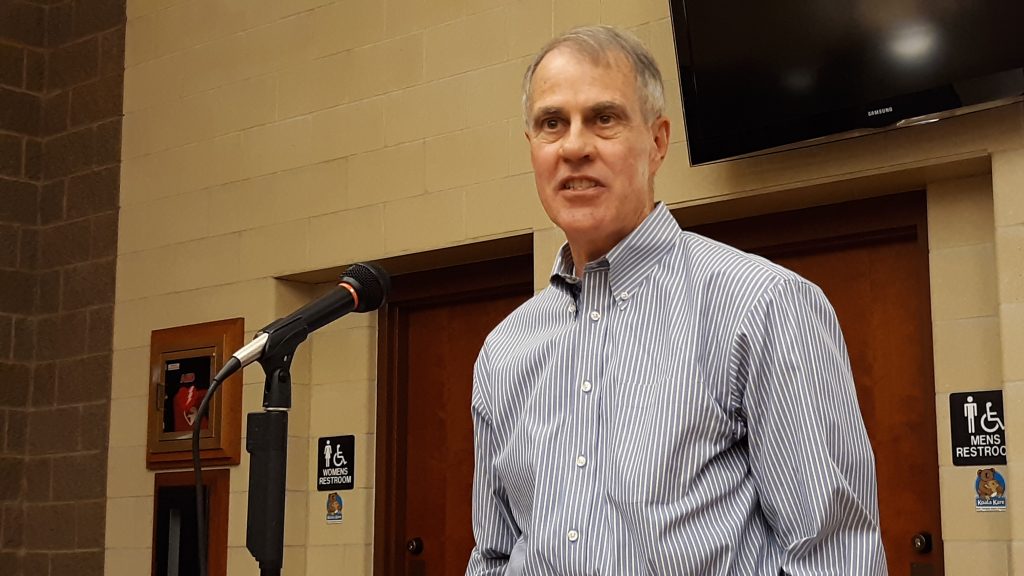
Bob McOmber, a former city councilman and former school board member, urged citizens to support the building issue – even if they prefer three separate elementaries.
“You folks may hold the outcome of the election in your hands,” he said. Doing nothing for the elementaries is failure. And the hostility directed toward the board, which is trying to solve the problem, is unacceptable.
“It pains me to watch this,” McOmber said. “These are good people, trying to do the best they can to solve a difficult matter.”
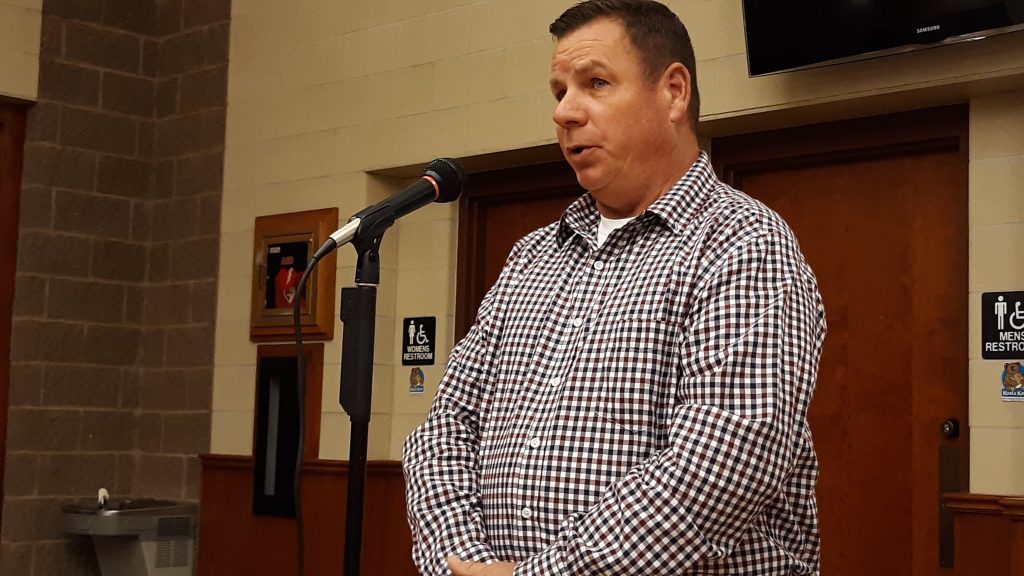
Bowling Green City Council President Mike Aspacher said voters may disagree on how many elementaries there should be – but they can’t dispute the deterioration of the buildings.
For that reason, City Council voted recently to unanimously pass a resolution of support for the building issue.
A new elementary will not only serve the students better, but it will help bring business to the city, and make the school district more competitive with neighbors.
“A public investment in education is necessary,” for the success of students, Aspacher said.
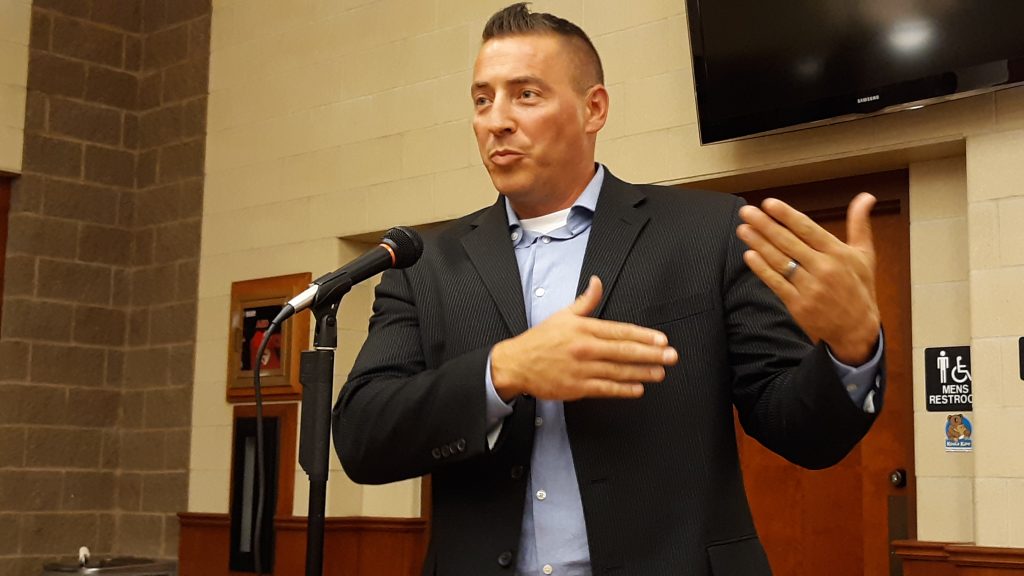
Ryan Myers, a candidate for the school board, said he supports the community school effort. But he is troubled by the personal attacks from those opposed.
“To bash someone’s character and motives is not OK,” he said. “The visceral attacks keep coming.”
Myers pointed out the message this is sending to students, who are watching, reading and listening to the adults.
“What are we teaching them?” he said.
Myers suggested that people need to start listening to each other.
“Why not start the healing now,” he said. “I hope we can rise above all this. Really at the center of all this is kids.”
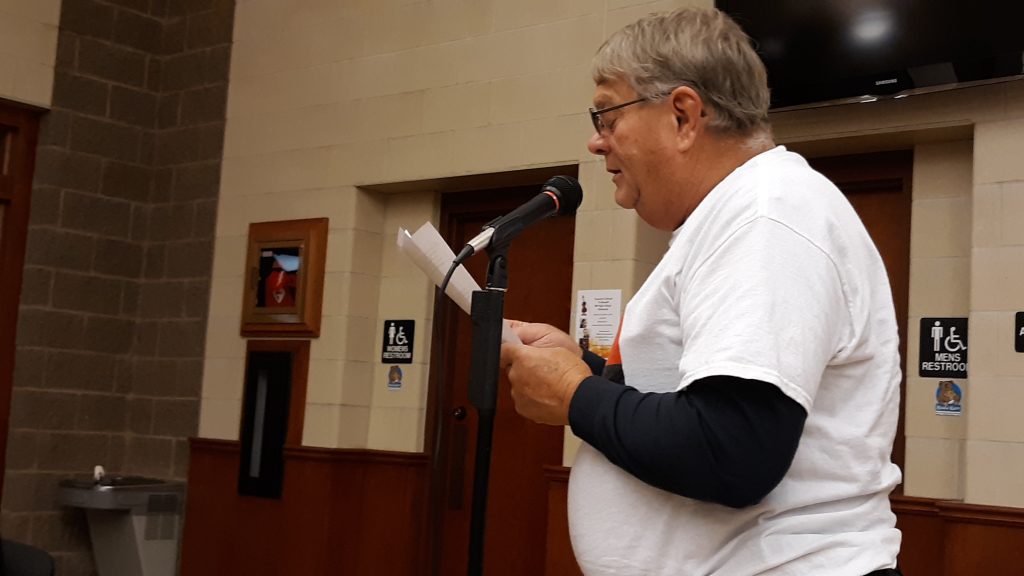
Ken Rieman, a member of both the school facilities and finance task forces, presented the board and audience with information countering the false information being spread by those opposed to the levy, he said.
The information, in a letter from board consultant David Conley, explains that the finance task force recommended the new building be financed with half property tax and half income tax.
“The board followed the recommendations from both task forces,” the letter stated.
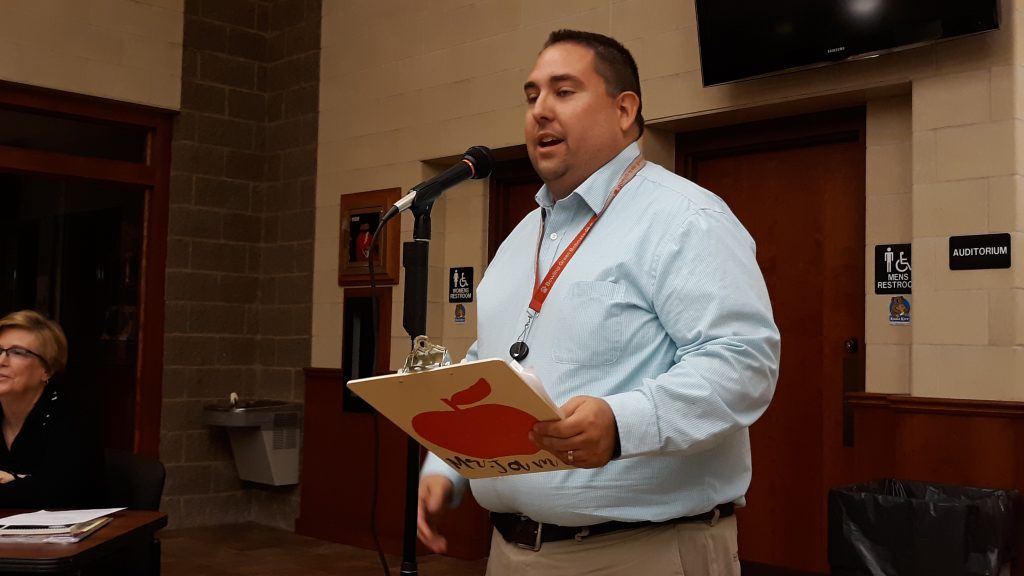
James Conway, a preschool special education teacher, said he supports the one community school. The one building would guarantee that children are “not separated by where they live.”
Conway, whose wife is the agriculture teacher and FFA adviser in the high school, said the one school concept will help unite the district, plus provide more equitable services and class sizes.
“The earlier we can intervene, the more successful we can be,” he said.
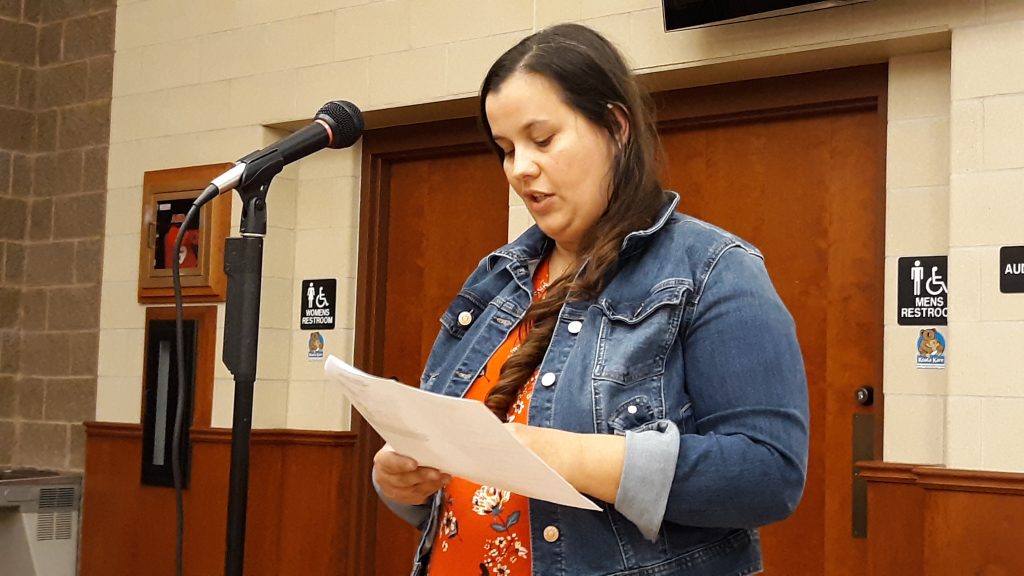
Sherrie Sparks, a parent from Milton Center, explained that she grew up in a small farm town. She talked about the Bowling Green teachers becoming a family away from home for children. They help students learn, and fight for extras like art, music, library and recess time.
But they are working in “outdated and dilapidated” buildings, and they don’t deserve to be demeaned and used as political targets by those opposed to the levy, Sparks said.
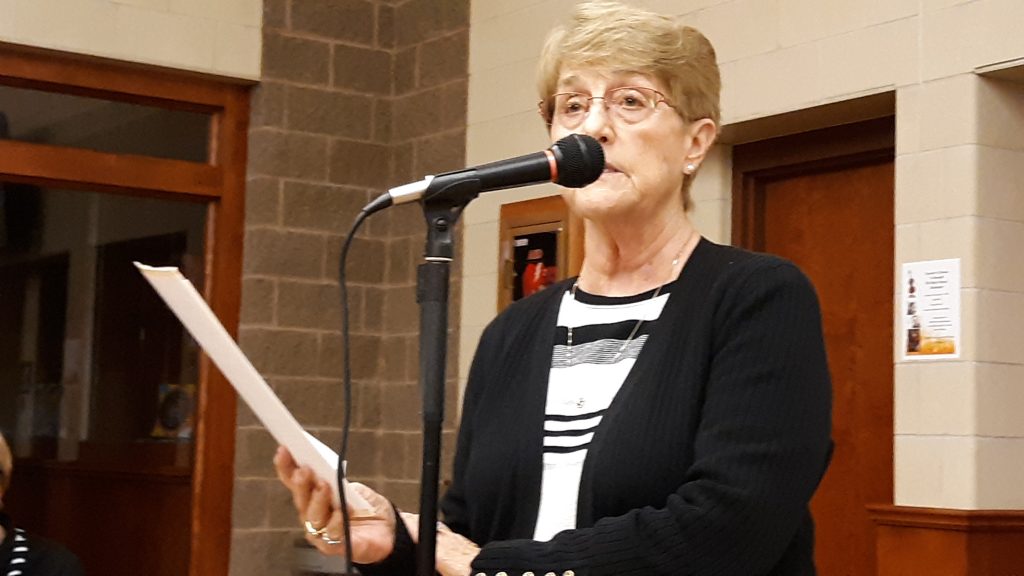
Laura Keller, a former principal at Springfield High School, said she and her husband, Gary, a former principal at Kenwood Elementary, support the one community elementary as the best solution to provide equity for students and an opportunity to collaborate for teachers.
Keller said the one elementary will also save on operational costs, by only supporting one food service operation, one safety operation, and eliminating travel between school buildings.
The levy has gained support of senior citizens, she said.
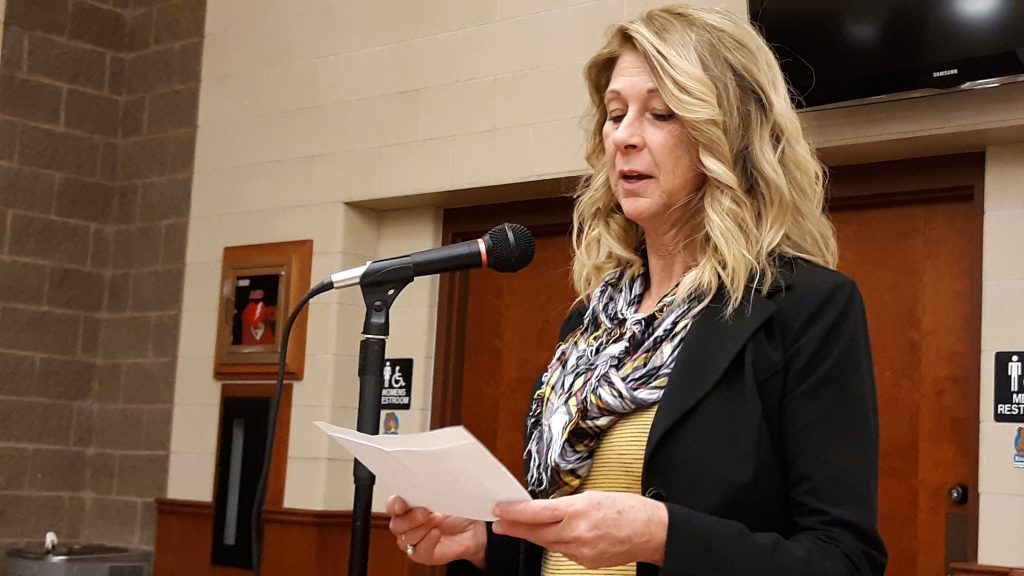
Mary Hinkelman, executive director of the Bowling Green Chamber of Commerce, said the chamber supports the one community school as the best way to provide quality education, to increase technology in the schools, and to promote a quality workforce for the future.
The new school would also help put Bowling Green on the same level as neighboring school districts when businesses make decisions about locating in communities.
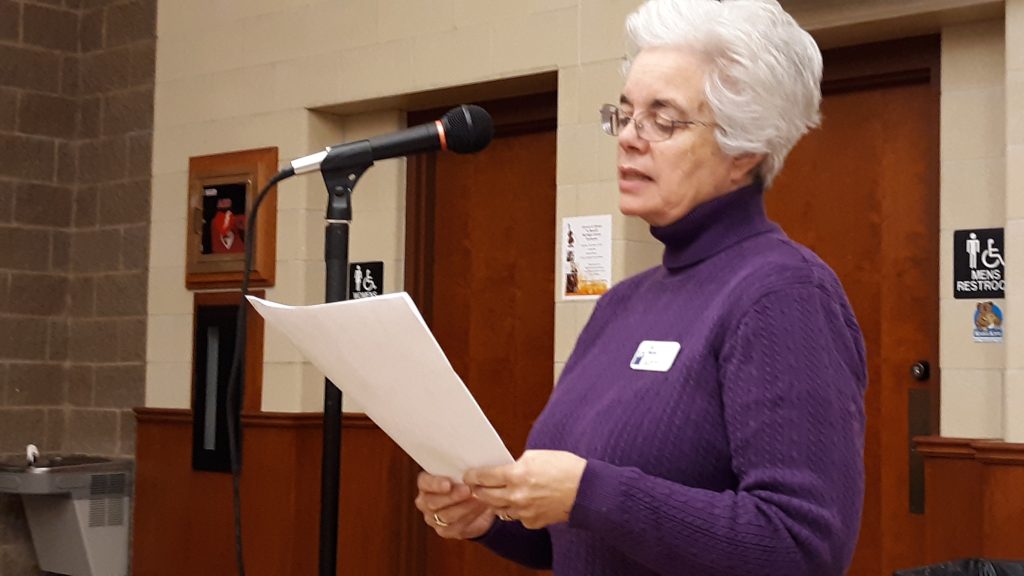
Lee McLaird, of the Bowling Green League of Women Voters, said the organization supports the one community school concept.
“We were taught in schools paid for by earlier generations,” McLaird said. But now there are new needs for technology, special needs students, and safety.
The school board responded to complaints about the last two levy attempts, she said, and lowered the amount of money being raised, split the amount between property and income taxes, and is trying for a portion of state funding.
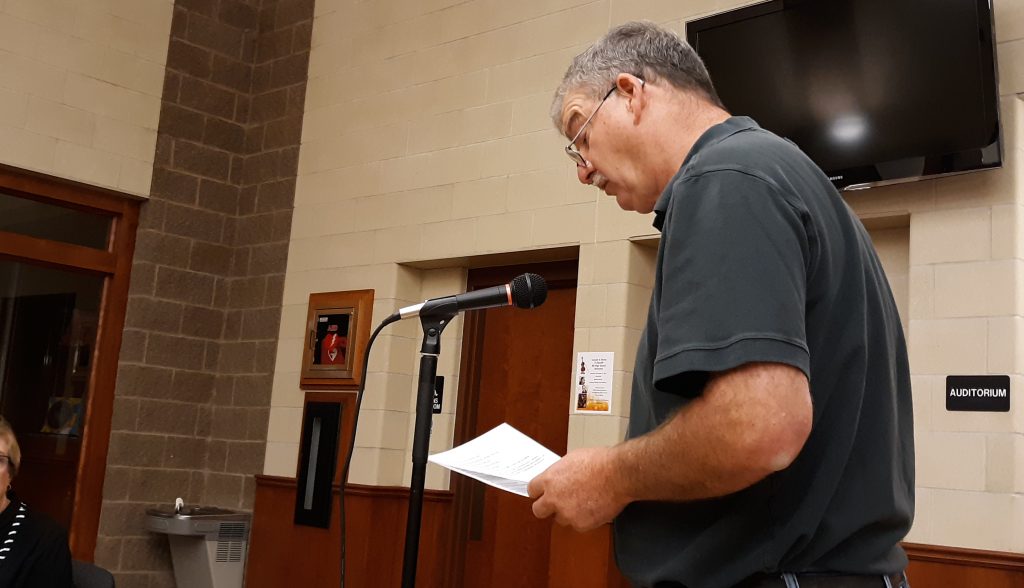
Richard Chamberlain, a member of both task forces who opposes the bond issue, said the board is stuck in the old way of funding schools. It would have been better if the board had gone for an earned income tax – rather than splitting the issue between a property tax and income tax, he said.
He said the district will be strapping the next generation with debt.
Chamberlain also criticized the board for not being transparent about being able to use an income tax for the building, and about overcrowding in the elementaries.
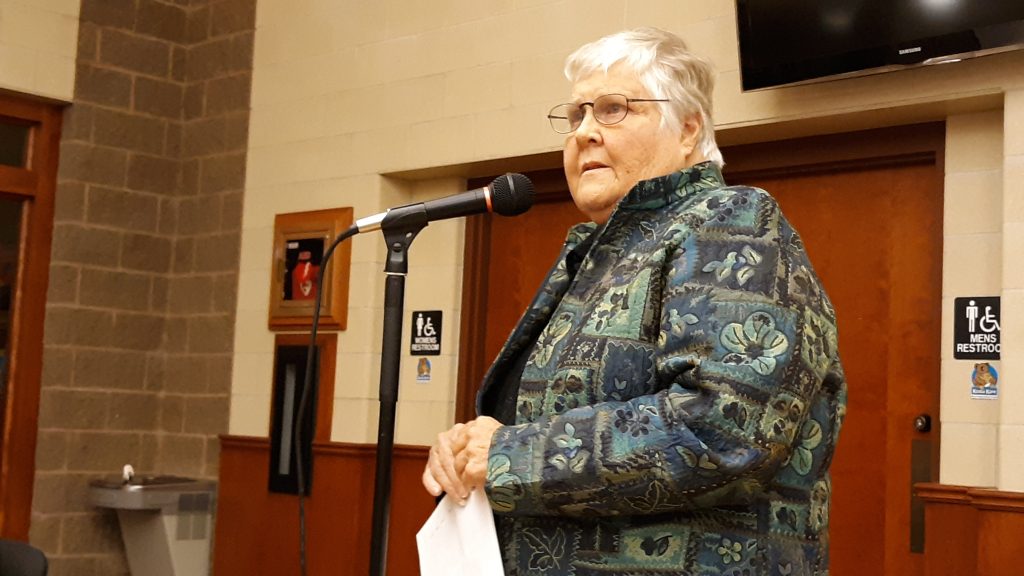
Linda Lander, a member of both task forces, read from a police report filed last year during the task force meetings. In that report, one of the current board candidates, Grant Chamberlain, admitted to making a threatening phone call to another member of the task force. He said, “Bad things happen to good people, just remember that,” but told police he meant nothing by it.
Despite information being put out by the opposition, Lander said the one school option has been endorsed by the task forces and the police division.
“Kenwood and Conneaut are obsolete,” she said of the 65-year-old schools. “They no longer meet state standards in many areas.”
And making piecemeal renovations is not good enough.
“A new school needs to be built for all students in this community.”
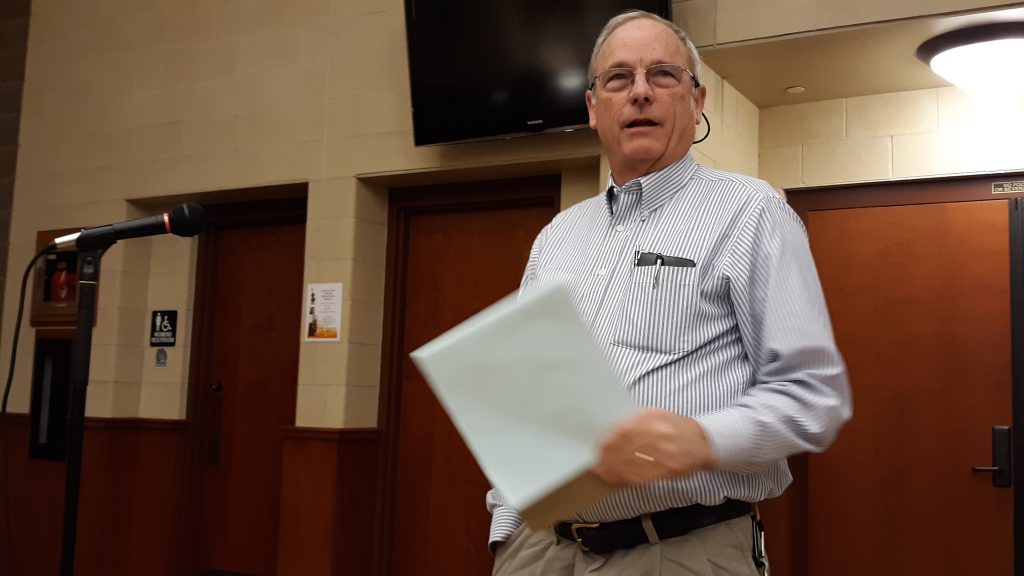
Wayne Colvin, a member of both task forces, said he is someone who analyzes everything and is quite frugal. He went into the task force process with the thought that three schools would be the best for the district.
However, he learned that very few children walk to the current “neighborhood schools.” Only 39 children live within one mile of Kenwood, 101 at Crim, and 105 at Conneaut. About 200 would live within one mile of the new community school.
“I don’t think numbers make the neighborhood schools,” he said.
Good schools are created by teachers, children and parents who work together to create a welcoming educational environment, Colvin said.
Putting money into the old elementaries would be a waste.
“You can paint a pig, but it’s still a pig,” he said.
Colvin also talked about the nasty campaigning. He has been proud of Bowling Green’s Not In Our Town efforts, but added, “We have allowed something to creep in.”
Residents of the 1950s, “put the children of the community first,” he said. “Many people in this room benefited.”
“It’s time for this community to step up and quit the bickering.”
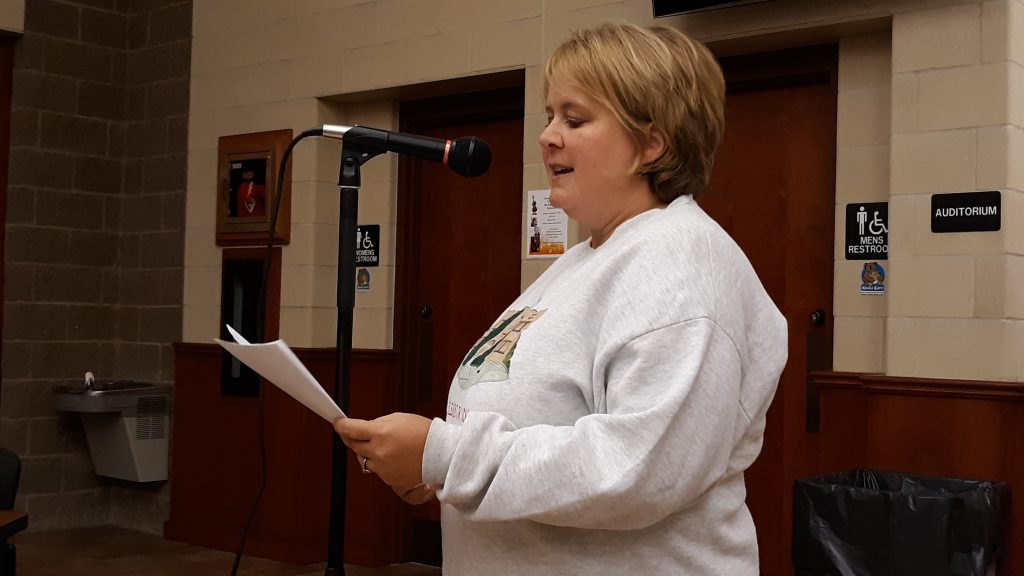
Stacey Higgins, a teacher at Crim Elementary, wore her old sweatshirt from Ridge Elementary, where she used to teach and which has since been torn down and turned into a park.
“Demands on our schools have changed,” she said. And the notion of neighborhood schools is “nostalgic.” Higgins said she can count on one hand the number of walkers in her class.
The insistence on keeping “neighborhood” schools has resulted in “interrupted progress and loss of opportunities,” she said.
Failure to pass the one community school issue may result in the need to split up children to get the services they need, or realigning students every year to equalize classrooms.
One elementary would provide “equitable educational opportunities,” she said.
“An address should not determine access to opportunity,” Higgins said. “We need a school that builds bridges, instead of boundaries. It’s time for one community, one school.”
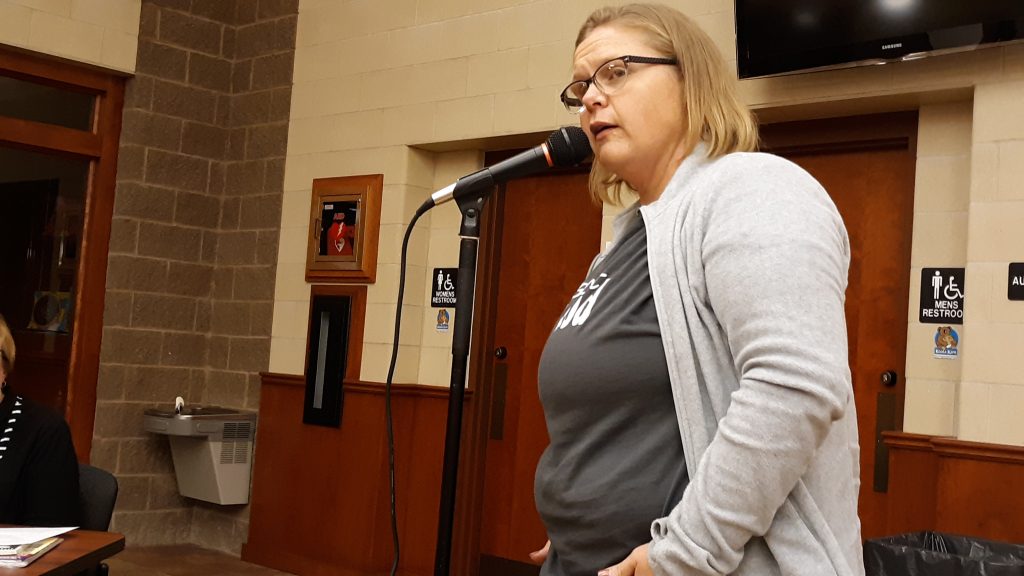
Tracy Hovest, a member of both task forces and a school board candidate, told the board she is “Bobcat proud.” She is proud of how the board, teachers and levy committee have handled the nastiness against the levy.
“When they go low, we go high,” Hovest said.
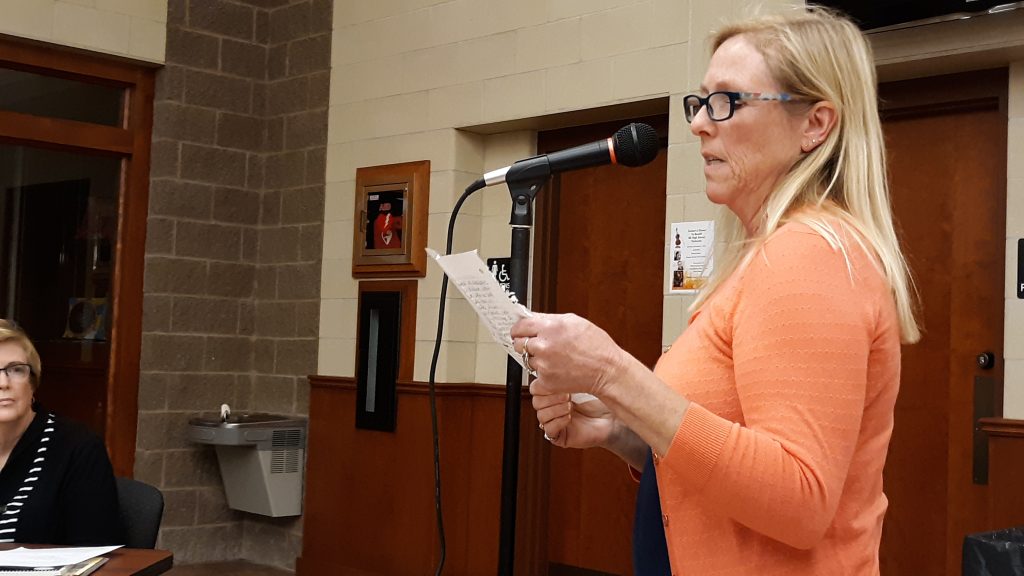
Brenda Pike, who didn’t state her position Tuesday evening but has spoken against the levy in the past, said the issue is pitting neighbor against neighbor. She asked what God would think of the situation.
“I have been verbally attacked,” she said. “Both sides claim they want what’s best for the kids.”
But the bullying and disrespectful behavior is setting a bad example for students, Pike said.
“What message do we want to send them?”

